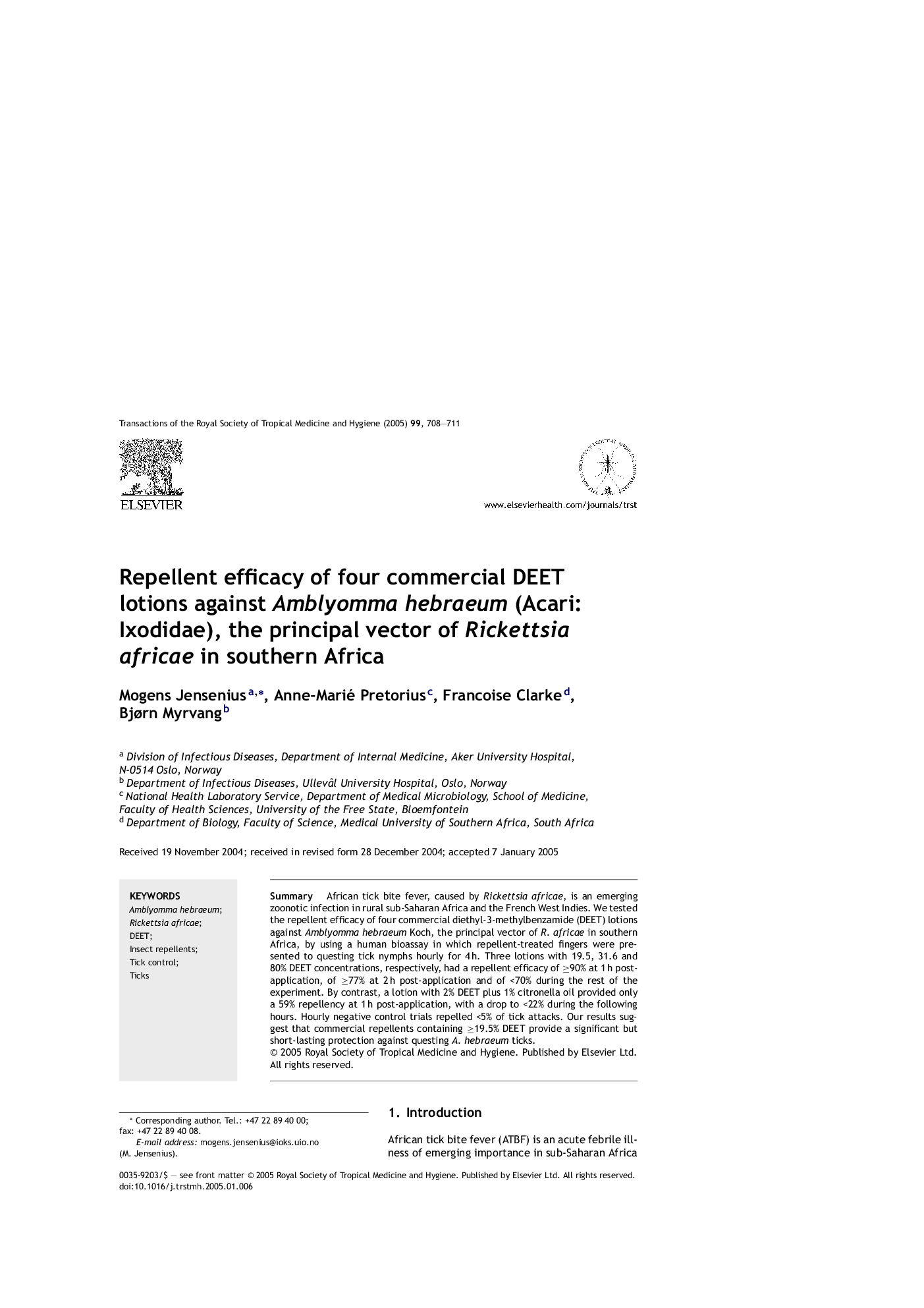| Article ID | Journal | Published Year | Pages | File Type |
|---|---|---|---|---|
| 10030536 | Transactions of the Royal Society of Tropical Medicine and Hygiene | 2005 | 4 Pages |
Abstract
African tick bite fever, caused by Rickettsia africae, is an emerging zoonotic infection in rural sub-Saharan Africa and the French West Indies. We tested the repellent efficacy of four commercial diethyl-3-methylbenzamide (DEET) lotions against Amblyomma hebraeum Koch, the principal vector of R. africae in southern Africa, by using a human bioassay in which repellent-treated fingers were presented to questing tick nymphs hourly for 4 h. Three lotions with 19.5, 31.6 and 80% DEET concentrations, respectively, had a repellent efficacy of â¥90% at 1 h post-application, of â¥77% at 2 h post-application and of <70% during the rest of the experiment. By contrast, a lotion with 2% DEET plus 1% citronella oil provided only a 59% repellency at 1 h post-application, with a drop to <22% during the following hours. Hourly negative control trials repelled <5% of tick attacks. Our results suggest that commercial repellents containing â¥19.5% DEET provide a significant but short-lasting protection against questing A. hebraeum ticks.
Related Topics
Life Sciences
Immunology and Microbiology
Applied Microbiology and Biotechnology
Authors
Mogens Jensenius, Anne-Marié Pretorius, Francoise Clarke, Bjørn Myrvang,
